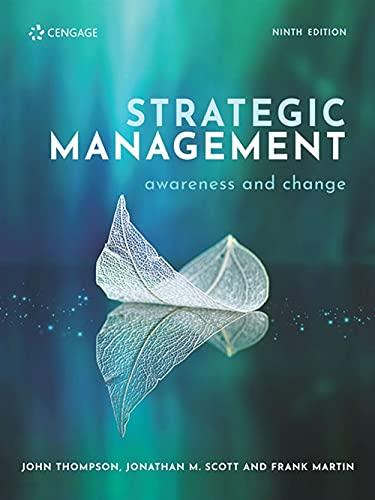Question
Q1. Jack is selling homemade bread with a 30% markup (i.e., the profit of each unit sold is 30% of the unit production cost). At
Q1. Jack is selling homemade bread with a 30% markup (i.e., the profit of each unit sold is 30% of the unit production cost). At the end of the day, his friend, Jose, is willing to buy all the unsold units if Jack offers a discount of 80% off the selling price.
What is the optimal service level (i.e., critical ratio) for selling bread? a. 28.85% b. 47.63% c. 63.14% d. 71.15%
Q2. A restaurant offers pancakes for sale at $9 per meal. The cost of production per meal is $4. Any unsold pancakes at the end of the day are thrown away with a salvage value of $1 per meal. The daily demand for pancakes follows a normal distribution with an average of 200 meals and a standard deviation of 60.
Based on the newsvendor model, what is the optimal number of meals the restaurant should prepare daily? a. 187 b. 219 c. 243 d. 260
Q3. Which of the following statements about the EOQ and newsvendor models is NOT TRUE? a. If the unit product purchasing cost increases, the optimal order quantity decreases in the EOQ model. b. If the fixed ordering cost increases, the optimal order quantity increases in the EOQ model. c. If the unit product purchasing cost increases, the optimal order quantity decreases in the newsvendor model. d. If the fixed ordering cost increases, the optimal order quantity increases in the newsvendor model
Step by Step Solution
There are 3 Steps involved in it
Step: 1

Get Instant Access to Expert-Tailored Solutions
See step-by-step solutions with expert insights and AI powered tools for academic success
Step: 2

Step: 3

Ace Your Homework with AI
Get the answers you need in no time with our AI-driven, step-by-step assistance
Get Started


